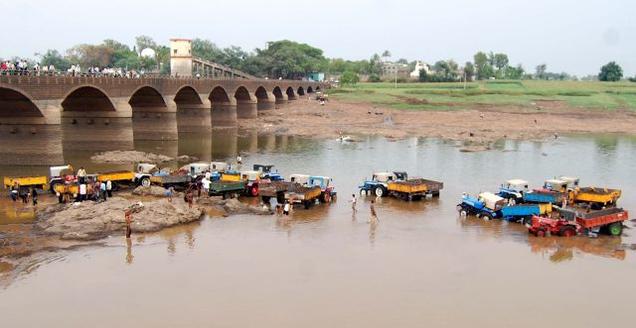 August 11;Should India have a river regulatory zone, on the lines of the coastal regulatory zone, to manage development and mining activity? The devastation in Uttarakhand, and the controversy over the sand mafia’s control on river beds, have revived the question. The Union Ministry of Environment is waking up to it.
August 11;Should India have a river regulatory zone, on the lines of the coastal regulatory zone, to manage development and mining activity? The devastation in Uttarakhand, and the controversy over the sand mafia’s control on river beds, have revived the question. The Union Ministry of Environment is waking up to it.
River ecologies, whether in coastal Kerala or hilly Uttarakhand, are changing. Stopping such change along and in rivers may be utopian, but a regulatory regime that maintains a balance between natural systems and development is needed.
A senior officer in the Environment Ministry says: “Forget government statistics of sand-mining. A better proxy to use is cement consumption, which is growing exponentially. As long as demand for cement grows, sand is bound to be extracted in increasing volumes. A ban will increase prices and make the trade illegal — but not stop it.”
Debilitation consequences
The rate at which sand gets replenished in rivers cannot match the volumes of the ‘minor mineral’ being extracted. The consequences can be debilitating for river ecology.
Chetan Agarwal, forest and environmental services analyst, explains: “The ecological production of sand and its movement downstream takes time. Sand works like a giant aquifer, but it is also an essential raw material for construction — being extracted at higher rates as prices go up though the costs for miners is only that of digging and transportation.”
Take the case of the seven rivers draining the Vembanad lake catchments in Kerala. Researchers at the Centre for Earth Science Studies in Thiruvananthapuram have shown that each year, on an average, 11.73 million tonnes of sand and gravel have been extracted from the active channels, and 0.414 million tonnes from river floodplains. The speed of depletion is 40 times that of generation. Consequently the riverbed in the storage zone got lowered at a rate of 7 cm to 15 cm a year over the last two decades.
Sand depletion from river beds is bad for ecology. And when matters get worse and rivers change course or flood patterns, it can be debilitating. Sand removal at a high rate alters the gradient of river beds and the speed at which water flows, causing erosion and altering downstream habitats.
Mr. Agarwal adds: “Sand in and around the river bed plays an ecological role — it acts as a giant aquifer and as a habitat for species. Haphazard mining can have an impact on flow patterns, change the profile of the riverbed and put embankments at risk.” While the ecological damage needs to be countered, a complete ban, Mr. Agarwal warns, is not the solution. It will only drive the market underground and create stronger mafias.
Sand, classified as a minor mineral, is the lookout of State governments and the Centre has fought shy of regulating its trade and mining. But permitting States to monitor extraction under certain conditions, and imposing limits on mining on the basis of the carrying capacity of rivers, may be steps towards keeping a check on a commodity which, unlike coal and other major minerals, by its nature will move through localised markets.
The Supreme Court in February 2013 stopped short of imposing a ban but asked that governments regulate the extraction of sand and other minor minerals based on recommendations the Environment Ministry made in 2010.
A committee appointed by the Ministry recommended clustering miners, giving them long-term leases of up to five years. It wanted mining plans for minor minerals to be made mandatory. Specifically for river beds, it wanted safety zones declared and mining restricted to a depth of 3 metres.
Mr. Agarwal looks at managing both demand and supply chains for sand mining. He says: “Implement chain of custody and certification measures on sand mining, as is done with certified timber production — both are natural ecological products. Have graded fines and enforcement for illegal mining in low, medium and high ecological risk areas, so even if there is some residual illicit mining, people will stay away from high risk/cost areas.”
On the demand side the question is whether there is some controllable element in sand demand, say per square foot of construction. He says builders use a skewed cement-sand ration as the latter is cheaper. “Incentivise no-plastering on the outside approach, as it’s done in Chandigarh,” he suggests.
